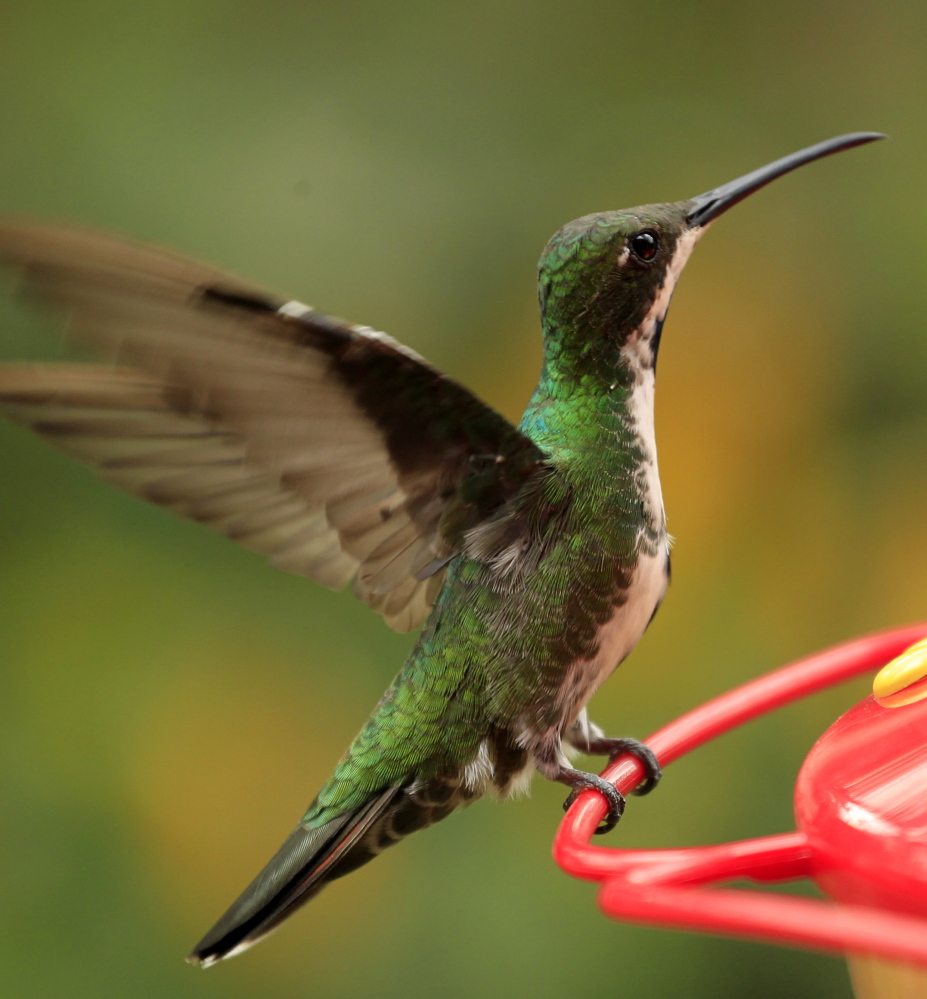Hummingbirds are speedy feeders, with their tongues darting 17 times a second, but they are also fussy eaters, researchers observed.
When they slurped water that researchers slipped into feeding stations in place of a sugary substance with nectar, hummingbirds pulled back their beaks, shook their heads as though to say, “What in the world is this garbage?” and spat it out.
“These hummingbirds look mad,” said a statement about the research, published Thursday in the journal Science.
The paper explores how hummingbirds evolved to prefer nectar when other birds lack the ability to perceive sweetness. Since they diverged from their closest relative, the swift, 40 million to 72 million years ago, hummingbirds have used their rare avian sweet tooth – and a taste for bugs – to expand to 300 species in South and North America.
It took an international team of scientists led by Harvard University biologist Maude Baldwin more than three years to answer the sweetness question.
Baldwin reached out to Stephen Liberles at the Department of Cell Biology at Harvard’s medical school, and they started researching how hummingbirds developed a taste receptor that wasn’t present in the genome of other birds.
Eventually they turned to Yasuka Toda, a graduate student at the University of Tokyo, who developed a way to test taste receptors in cell culture.
The research is important because “sensory systems give us a window into the brain to define what we understand about the world around us,” Liberles said. “The taste system is arguably a really direct line to pleasure and aversion, reward and punishment, sweet and bitter. Understanding how neural circuits can encode these … gives us a window into other aspects of perception.”
Send questions/comments to the editors.



Success. Please wait for the page to reload. If the page does not reload within 5 seconds, please refresh the page.
Enter your email and password to access comments.
Hi, to comment on stories you must . This profile is in addition to your subscription and website login.
Already have a commenting profile? .
Invalid username/password.
Please check your email to confirm and complete your registration.
Only subscribers are eligible to post comments. Please subscribe or login first for digital access. Here’s why.
Use the form below to reset your password. When you've submitted your account email, we will send an email with a reset code.